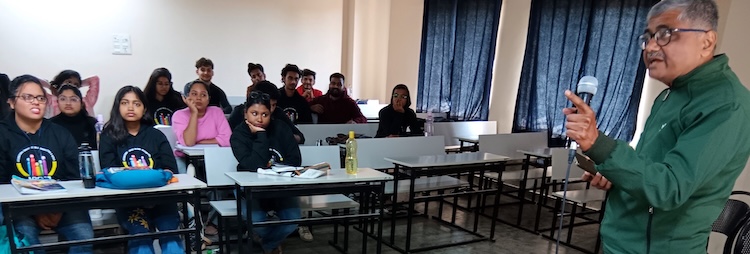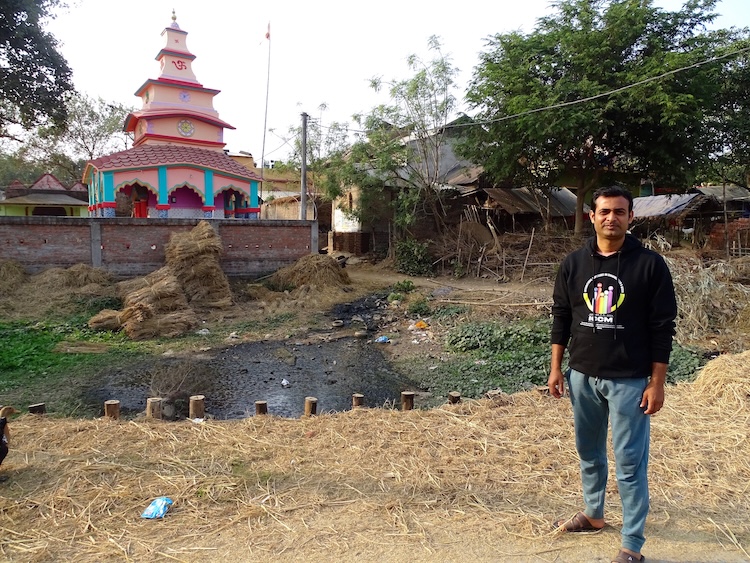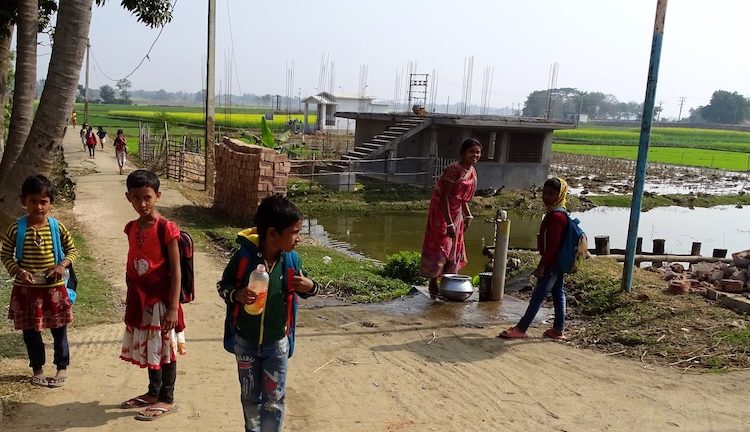By Kalinga Seneviratne
SHANTINIKETAN, India | 6 March 2025 (IDN) — In the immediate aftermath of the decolonisation process in the 1960s and 1970s, led by Western scholars, development communication was seen as a top-down process where communication could be used to educate the peasants to wean them away from subsistence farming and other livelihoods and embrace Western-style capitalist models.
The pioneers of this model of development communication were Wilbur Schramm of Iowa University, Daniel Lerner of Massachusetts Institute of Technology and Everett Roger of Ohio State University. Who developed these theories at American universities and tried to implement them first in Latin America and later in Asia and Africa.
This top-down development communication process involved using communication tools like radio and television to educate the poor to embrace a capitalist economic model. One example was using radio to promote the use of new high-yielding rice seeds and chemical fertiliser that fueled the “green revolution” in Asia, and India in particular.
Toward the end of the 1980s, this development communication model was seen as a failure, and the new buzzword became participatory communication. In this model, there needs to be a two-way communication process for villagers to accept the development wisdom dished out to them by scholars in universities and government development officers—usually graduates from universities.
After her landmark paper ‘Development Communication in the Agricultural Context’ in 1971, Filipino academic Nora Quebral rapidly gained a reputation as the “mother of development communication” in Asia. At the University of the Philippines in Los Banos, she was instrumental in setting up the Institute of Development Communication in 1987, which, over the years, became a famous centre for training development communicators and journalists from across Asia.
This participatory development communication model was particularly popularised in the Philippines, where low-powered community radio in the villages, with local community members empowered by training them to be communicators, spread, especially through the Tambuli Community Radio model, which worked closely with university-based mass communication programmes. This model has also had some successes in Africa.

A team of Indian communication scholars led by Professor Biplab LohaChowdhury of the Center for Journalism and Mass Communication at Visva-Bharati University in Shantiniketan is taking development communication to a new height. He believes that the Sustainable Development Goals (SDGs) can only be achieved at the grassroots level when the community understands and believes in them. Their innovative approach, ‘developing community from within,’ has shown promising results, instilling hope for the future of development communication.
He calls it “developing community from within,” where, through participatory research within the community, models of village development using indigenous communication models are developed.
“Governments and outside NGOs look at grassroots communities from a top-down approach, and they try to fit communities into their development plans. (Our) ‘developing community from within’ approach wants to make people stand up on their own strength in a sustainable way without leaving their own place,” explains LohaChowdhury in an interview with IDN. This approach empowers local communities, inspiring them to take charge of their own development.
Since 2011, Loha Choudhury has been working with a team of university doctoral scholars and master’s students to redefine development communication with the participation of grassroots communities. “We are trying to show how communication can be utilised as an instrument of 360-degree participation, utilising communities’ own communication spectrum, starting from interpersonal communication, group communication, and masculine communication within the village,” he adds.
This new attempt to redefine development communication as a Community Communication Spectrum (CCS) strategy originates in his action project during 1998-2000 at Assam University Silchar. It looked at own communication resources of 3 communities in Assam. The CCS strategy was operationalised in time-space-memory dimensions of communities’ own Indigenous knowledge about natural, social, communicational and technical competence.
The team of faculty members, research scholars, and master’s students from both Assam and Visva-Bharati universities has adopted this model in 6 villages—in West Bengal and Assam—many of which belong to scheduled castes (underprivileged communities) and tribes.
“The issue of sustainable development needs to be effectively resolved by reimagining the use of communication on community’s terms. The ability of people to take initiatives by themselves, in one way a demonstration of intra-community communication success, demonstrates their ability to sustain and expand development,” argues LohaChoudhury.
One of the villages where this model is at work is Namokanda, a scheduled caste community of 140 families located near Santiniketan—about an hour by train and 15 minutes by local transport. The community has existed there for over five centuries and is mainly involved in agriculture and dairy farming.

IDN visited this community accompanied by Srimant Mandal, a local resident who is pursuing a PhD in development communication at Visva-Bharati University.
The community has a school funded by the government in land donated by villagers, where 28 children from the village are educated at the primary level. Mandal said he was also educated here. After advocacy, water pumps were provided to the community, where the government pays the electricity bill, and the village maintains it through a user-pays system. A 9-member village committee coordinates local community development.
“I was born and brought up here, and I live in the village” pointed out Mandal. He is currently teaching at the nearby public school while also undertaking a Phd at Visva-Bharati University, where he did his undergraduate studies. During this time Professor LohaChoudhury got him involved in the development communication project at his village.
Mandal explained the process. He was involved in a house-to-house trans-generational survey that identified their health, education and cultural needs. After that, a lot of community meetings termed ‘information gap elimination meet series’, where the identified gaps in information and knowledge were addressed, were held. Workshops took place, assisted by Visva-Bharati and Gurudev Rabindranath Tagore Foundation New Delhi. “This is the idea of community development through the CCS where the villagers take the initiative to identify problems and take the initiative to develop solutions themselves”, he explained.
“We train them to first to identify what are their own problems,” explains LohaChowdhury. “It is not thrust from outside (by the University’s development communication team), our team comprises of one anchor whose duty is to ensure that everyone there talks so that the group communication is not captured by the elite of the village.
This ensures that the community meetings are facilitated in a way that encourages open and inclusive communication, providing reassurance about the support provided.”
He also added that the meetings, assisted by the university team, are designed to help a natural leadership team emerge. “In this approach, outside resources will be used very little, even if they are used mostly within the villagers’ own capacity,” says LohaChoudhury.
The former head teacher of the village school, Sunil Kumar Sarkar, told IDN that through the community-initiated development communication process, they had built a community charitable self-entertainment initiative. They entertained through their own cultural forms of trans-generational nature. They built Dharmaraj Club and Dharma Gola to help people experiencing poverty in the community. Part of the harvest goes to people with low incomes to encourage them to participate in the community entertainment programmes etc. Villagers have set up their own cooperative – Nagara Namakanda Samabay Samithi—to help farmers economically with their own funds.
“This is what development from within means—inspire and develop ourselves from our own resources,” says Sarkar.
Mandal says that as a PhD researcher from the village, he will examine how young people use technology for communications in his village. “I am observing as a participant from within the village, staying in the village,” he points out.
From IDN observations, it is clear that Nomakanda has transformed from what one village leader described as a “village with no food, no roads and health services in the 1970s” to what one may call an “elite village” with a clean environment and an educated community that can utilise sciences and indigenous knowledge together into agriculture, and access jobs in nearby towns and cities. One community elder said, “we are categorised as a ‘scheduled cast’’ community (needing government assistance) but economically we have got over it”. [IDN-InDepthNews]
Image: Nomakanda village with school children returning home and woman collecting water from the pumps. Credit: Kalinga Seneviratne.


